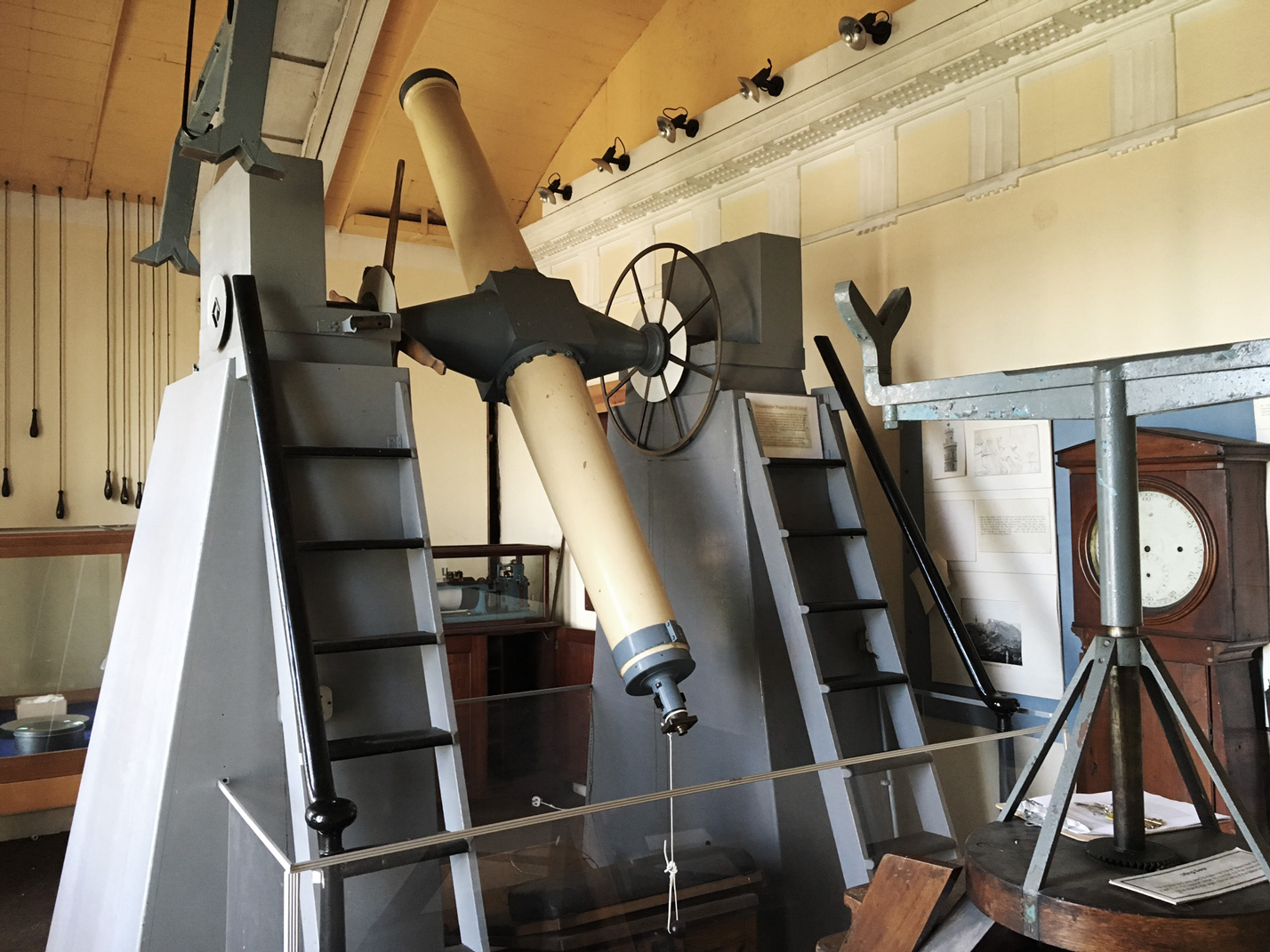Designed by William Henry Playfair in 1818 the City Observatory is the birthplace of astronomy and timekeeping in Edinburgh. The A-Listed complex is one of Edinburgh’s most important and iconic historic sites and, straddling the Old and New Towns, is a jewel in the UNESCO World Heritage Site.
Behind the walls sits a collection of buildings including the 1812 Transit House, the City Dome, the Playfair Monument and assorted ruinous telescope domes, with the City Observatory at the centre, a temple to scientific innovation and discovery. The site forms a vital component in the group of buildings on Calton Hill, which are architecturally and culturally significant to the history of Edinburgh and Scotland and contribute to Edinburgh’s reputation as the Athens of the North.
The Observatory requires major investment and conservation as it is on the Buildings at Risk Register and at serious risk of loss. Time is critical as there is water ingress, wet and dry rot, ceilings have collapsed and there is a real risk of losing some of the unique historic features.

Working in partnership with the City of Edinburgh Council, Collective is conserving the City Observatory, reinstating the original William Henry Playfair designs, creating a new-build gallery and restaurant and saving the site for future generations.
Astronomy on the site dates from 1776 when the first Observatory, founded by Thomas Short was built to a design by James Craig, architect of the New Town. The Transit House, dating from 1812, sits on the west of the site and was used for transit observations right up until Thomas Henderson (the First Astronomer Royal for Scotland) was installed as Director of the City Observatory in August 1834.
The City Observatory was commissioned by the Astronomical Institution, founded in 1811, and the first society in Britain devoted solely to the science of Astronomy. They wished to build an observatory which could be used for scientific research, establish an accurate public time service for Edinburgh and Leith, which was vital for navigation, and create a popular observatory where members of the Institution could conduct their own experiments and research. The Institution presented a loyal address to the King during his visit to Edinburgh in 1822, and he bestowed the title of "Royal Observatory of King George IV". In 1896 the Royal Observatory relocated to Blackford Hill and the Calton Hill Observatory reverted to the City Observatory.

The Observatory houses two telescopes, an 8.3ft Fraunhofer-Repsold Transit Telescope (pictured above) installed in the west wing in 1831 which was used to set the clocks for the Edinburgh Time Ball on the Nelson Monument and the One O’Clock Gun from 1852-94. The McEwan Telescope, a 6 inch astronomical observatory refracting telescope, made by T Cooke, York, in 1896, is housed upstairs in the main Dome.
1811 Edinburgh Astronomical Institution founded
1812 The Transit House opened
1818 Foundation stone for Calton Hill Observatory laid
1826 Building work on the National Monument, designed by WH Playfair, begun
1826 John Playfair Monument, designed by WH Playfair, completed.
1828 Observatory Compound Walls built
1829 Work on The National Monument stopped
1831 Fraunhofer Repsold transit telescope installed
1831 Dugald Stewart Monument, designed by WH Playfair, built
1834—44 Thomas Henderson, first Astronomer Royal for Scotland, appointed
1846—88 Charles Piazzi Smyth, Astronomer Royal for Scotland appointed
1853 Time-ball on Nelson Monument, installed
1861 Cable linking Nelson Monument to the castle installed
1895 City Dome, designed by Robert Morham, completed
1896 The Royal Observatory was moved to Blackford Hill
1895—98 Ownership transferred to Edinburgh Town Council, renamed as the City Observatory
1896 McEwan (Cooke) telescope presented to the City Observatory
1938 City Observatory leased to the Astronomical Society of Edinburgh
1940s Internal alterations to the City Observatory carried out
1966 The City Observatory and Playfairs Monument listed category A
1984 Collective established as an artist run space, High Street, Edinburgh
1990 Collective moves to Cockburn Street and adopts a Board of Directors
1995 Calton Hill included in Edinburgh World Heritage Site designation
2009 The Astronomical Society of Edinburgh left the Observatory
2010 Collective showed Staged by artists Kim Coleman and Jenny Hogarth in the City Observatory as part of Edinburgh Art Festival
2013 Collective moved to temporary accommodation on Calton Hill
2013 First exhibition opens in the temporary accommodation
2014 City Dome opened to the public in January
2014 The Court of Session granted the City of Edinburgh Council permission to award Collective a lease for the full site for 25 years
2015 Planning Permission granted for redevelopment of City Observatory
2016 Construction programmed to begin in the autumn
2016 Ground Breaking Ceremony held as construction begins
2017 Foundations and walls of new gallery space and restaurant constructed
2018 Re-opening planned - keep an eye on our website/social media for updates